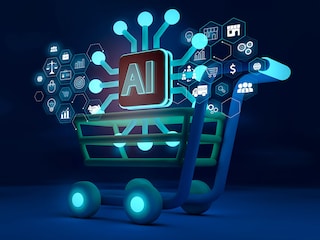How AI agents are rewriting retail power
As AI agents shape buying decisions, both brands and retailers must master AI agent optimisation to retain influence


AI tools that act on behalf of consumers are quietly but decisively shifting power in the retail landscape. Increasingly, shoppers are bypassing search engines, comparison sites and even traditional e-commerce platforms. Instead, they ask conversational agents like ChatGPT or Perplexity to evaluate options, summarise reviews and identify the best place to buy the item. Some agents are already completing purchases.
This change alters more than just shopping habits. It challenges the role of traditional intermediaries and redistributes influence between retailers and brands. In this environment, those who control access to the end customer and meet their needs in machine-readable ways will hold the advantage.
These insights summarise research published in our recent Harvard Business Review article that explored how AI agents are transforming consumer search and buying behaviour.
The arrival of e-commerce changed that balance. Online retailers gained direct access to customer-level data, including browsing patterns, returns and personal preferences. This shift allowed them to optimise pricing, tailor product recommendations and eventually build entire advertising businesses from the data. As a result, retailers became gatekeepers not just of transactions but of attention and influence.
Not limited to a handful of trusted platforms, AI agents can surface alternatives that might otherwise be missed, such as a boutique designer with better reviews, or a local supplier with faster shipping. In doing so, they level the retail playing field and transfer power to those offering objective value, not just brand awareness or prime digital shelf space.
Retailers like Amazon, with efficient logistics and user-friendly service, are also well positioned. Their ability to meet the high standards of a GenAI agent will cement their dominance. But others, especially mid-tier players that offer neither standout service nor pricing, will face increasing pressure. Differentiation will matter more than ever, and data transparency will make it harder to fake.
To stay competitive, brands will need to invest in what we call AI agent optimisation (AAO). This means ensuring their product strengths – from build quality to performance to design – are clearly measurable, machine-readable and embedded in the sources agents rely on, such as reviews, specifications and third-party comparisons.
AAO will also compel brand marketers to shift from brand-first messaging to need-first positioning. Consumers and their AI agents are less likely to search for a specific brand, and more likely to ask for the best product for a given scenario: “What’s the best carry-on suitcase for frequent flyers?" Agents are more likely to surface brands that articulate their unique value in this context.
To succeed in this AI-driven retail landscape, brands and retailers will need to clearly set themselves apart through distinct offerings and by building strong AAO capabilities. Innovation, thoughtful design and high-quality service will continue to matter – not just to consumers, but to the algorithms that guide their decisions. This will lead to the rise of AAO as a new discipline, akin to search engine optimisation (SEO).
Conversely, brands that offer little more than name recognition, without tangible value or differentiation, may struggle to retain their position. As AI agents increasingly shape the consumer journey, long-term success will hinge on being both discoverable and meaningfully distinct.
This is an adaptation of an article published in the Harvard Business Review.
First Published: Jun 12, 2025, 14:14
Subscribe Now